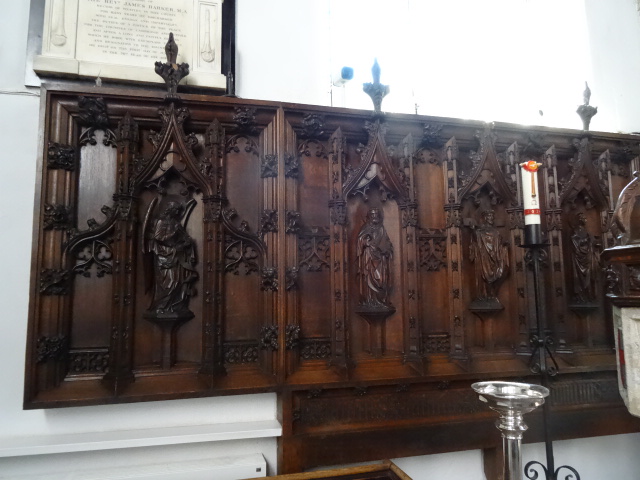I'm staying in Cambridge for a few days. This morning I headed north to Ely on the train for my first visit to the city in some seven years, and this afternoon I headed into Cambridge city centre to Little St Mary and King's College Chapel. A busy day, and I'm going to start with the parish church of St Mary, Fitzwilliam St. - almost opposite Pembroke College - known as Little St Mary to differentiate it from Great St Mary, the University Church. It doesn't, as you might have expected, refer to its size. Yes, it has no aisles or transepts, and no tower, and it is unicameral, having no architectural distinction between nave and chancel, but that single space is on a large and ample scale; with the exception of King's College Chapel and Great St Mary's, larger and grander in conception than any other medieval church in Cambridge. Larger than some cathedral choirs in, say, Scotland or Wales. I mention that because St Mary's is a fragment - like the chapel of Merton College Oxford, the chancel of an intended collegiate church. Built to serve Peterhouse next door (the buildings are actually connected) and it served as both parish church and college chapel until 1632, Matthew Wren (uncle of Sir Christopher Wren, if you were wondering) built the chapel at Peterhouse
Built in the Dec style St Mary's has some very fine window tracery. The interior is vast, limewashed and light-filled, rather East Anglian in feel. It smells of stale incense, and it is a church I'm rather fond of (although these photos don't do it justice) and I've worshipped there on a couple of occasions in the past. The roof is a Victorian recreation of the original, (I think by Sir George Gilbert Scott - he restored the church 1856-7 so it seems likely.), and it works rather well, like being in an upturned boat. Whatever was the original form there was, until that restoration, a rather fine Jacobean roof; perhaps it dated to the time of Robert Crayshaw, the priest, poet and mystic. It is also possible to mourn the loss of the 18th century panelling, which covered the lower walls of the chancel. Half way along the length of the church is a door and recess on each side; these originally led to chantry chapels of the 'barnacle' variety. The south one, unblocked, now leads to a Lady Chapel of the SSPP, 'Back to the Baroque', Anglo-Catholic Congress type. The work of T H Lyon and dating from 1931. A period piece.
Following on from Scott senior, his son, the ill-stared George Gilbert Scott Jnr worked at St Mary's (see the reredos at the back of the church behind the font), as did Sir John Ninian Comper after him.

















No comments:
Post a Comment